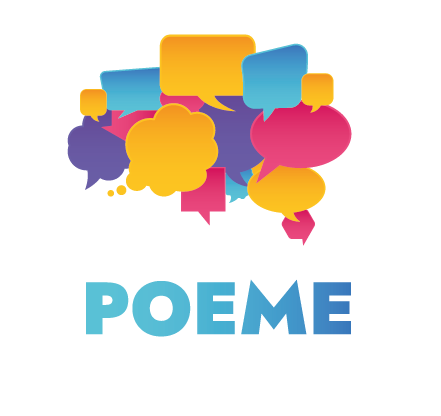Second language acquisition is a complex process that goes beyond the acquisition of syntax, grammar, and vocabulary. Learning a new language also involves gaining understanding of the cultural and social contexts in which that language is spoken. Learning a new language can become daunting if social, integration or cultural issues cause additional stress to the students. Art, in all its forms, can play a significant role in second language acquisition by exposing learners to the cultural and historical aspects of the target language.
The POEME project suggests innovative tools to encourage and assist the second language acquisition by students of an immigrant background. Cultural heritage monuments and especially those recognized by UNESCO at a global level, have been used as paradigms on which worksheets, e-books and ultimately, blended learning exhibitions, were based. Art is a substantial art of cultural heritage worldwide and it may contribute to learning in several subjects, including language, either native or second.

Visual and performing arts, such as paintings, music, theater, and dance, can open a window into the culture and history of the target language. Artistic expressions have been part of human culture since the beginning of time, and they are deeply rooted in the history and traditions of each society. By studying the art of a target language, learners can gain insight into the values, beliefs, attitudes, and practices of the people who speak that language.
Visual arts can play a fundamental role in language acquisition by providing a visual representation of language concepts. They can help learners understand new vocabulary and grammar structures in a way that is tangible and memorable. In addition, visual arts can help learners immerse themselves in the language and culture they are studying, leading to a deeper understanding of both.
Moreover, art can also help learners develop their language skills in various ways. For example, analyzing a painting or an artifact in the target language can support learners in improving their vocabulary, grammar, and comprehension skills. Also, performing arts can be used as a means to develop listening and speaking skills, as learners may have to work in groups and interact with others through dialogues and role-plays.
By incorporating art in second language teaching, teachers may be assisted in several ways such as:
- Creating bridges between written and spoken language,
- Make learning relevant and meaningful,
- Help students develop self-esteem,
- Foster creativity,
- Highlight similarities and differences, including cultural ones,
- Promote analytical, reasoning, and questioning skills,
- Boosting students’ skills of observing, responding to, and representing the world.
In conclusion, art can support and enhance second language acquisition by providing learners with cultural, historical, and linguistic input. Educators should incorporate art in their language teaching practices to create a more immersive and engaging learning environment for their students. By doing so, learners can develop a deeper understanding of the target language and its cultural contexts, which can ultimately lead to more successful language acquisition.
Image credits: https://www.quotescosmos.com/quotes/Leo-Tolstoy-quote-14.html, https://journals.sagepub.com/doi/10.1177/0040059920942266
References
Belli, S. A. (2018). A study on ELT students‟ cultural awareness and attitudes towards incorporation of target culture into language instruction. Journal of Language and Linguistic Studies, 14(1), 102-124.
De Jesus, O. N. (2016). Integrating the Arts to Facilitate Second Language Learning. Open Online Journal for Research and Education, 5, 1- 4.
Victoria State Government (2021), Literacy Teaching Toolkit: Introduction to literacy in Visual Arts. Retrieved on April 30, 2023 at: https://www.education.vic.gov.au/school/teachers/teachingresources/discipline/english/literacy/Pages/introduction-to-literacy-in-visual-arts.aspx#link1




